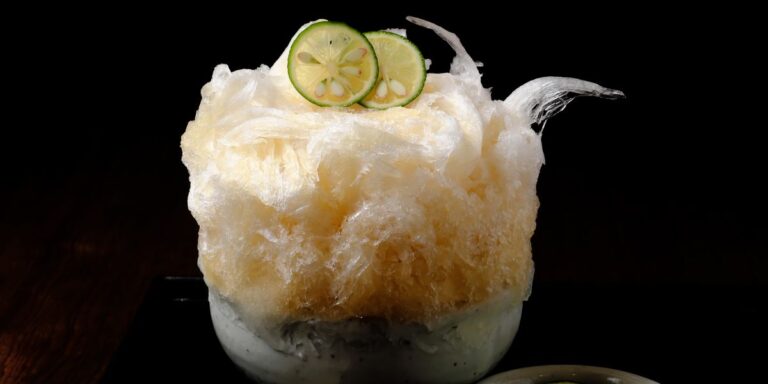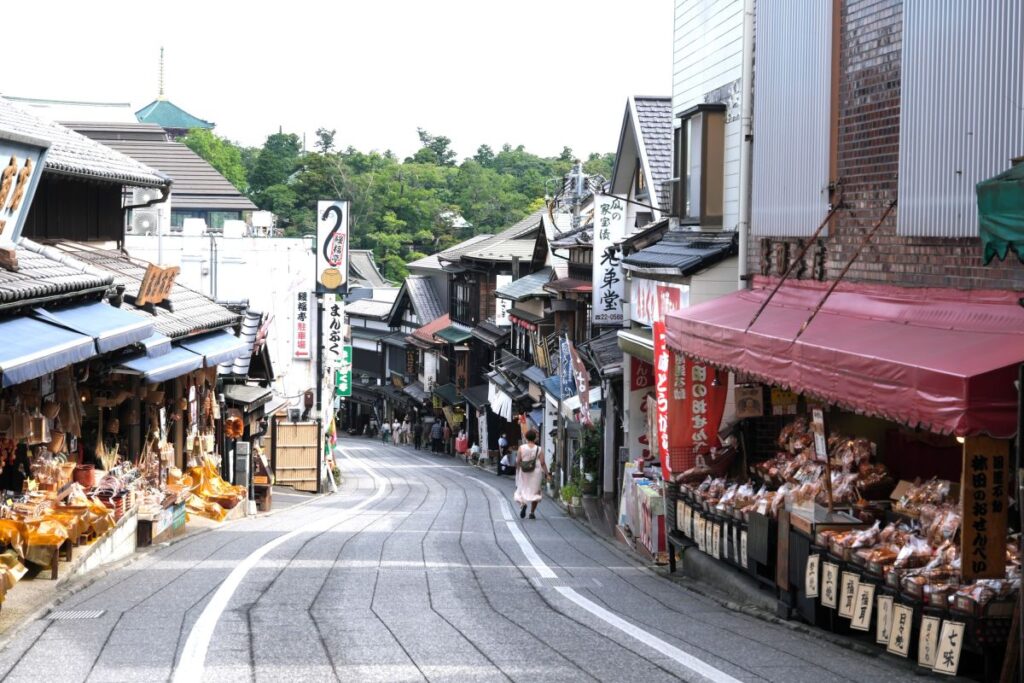
Naritasan Shinshoji Temple, with a history of over 1080 years, is one of the most famous temples in Japan, attracting over 10 million visitors a year. The large grounds are lined with numerous temple buildings, and the temple is known for its wide range of benefits, from love fulfillment to prayers for career advancement. Omotesando, which continues from Narita Station, is lined with delicious restaurants, so you can enjoy eating your way around. Make sure you're hungry when you head out to Narita for your pilgrimage.
Departure is at Narita Station. Eat and walk at Omotesando
Narita Station is the starting point at Narita Station. JR and Keisei Electric Railway stations face each other, and the Omotesando begins between them. From here, Naritasan Shinjoji is about 800m, and it takes about 20 minutes to walk slowly.
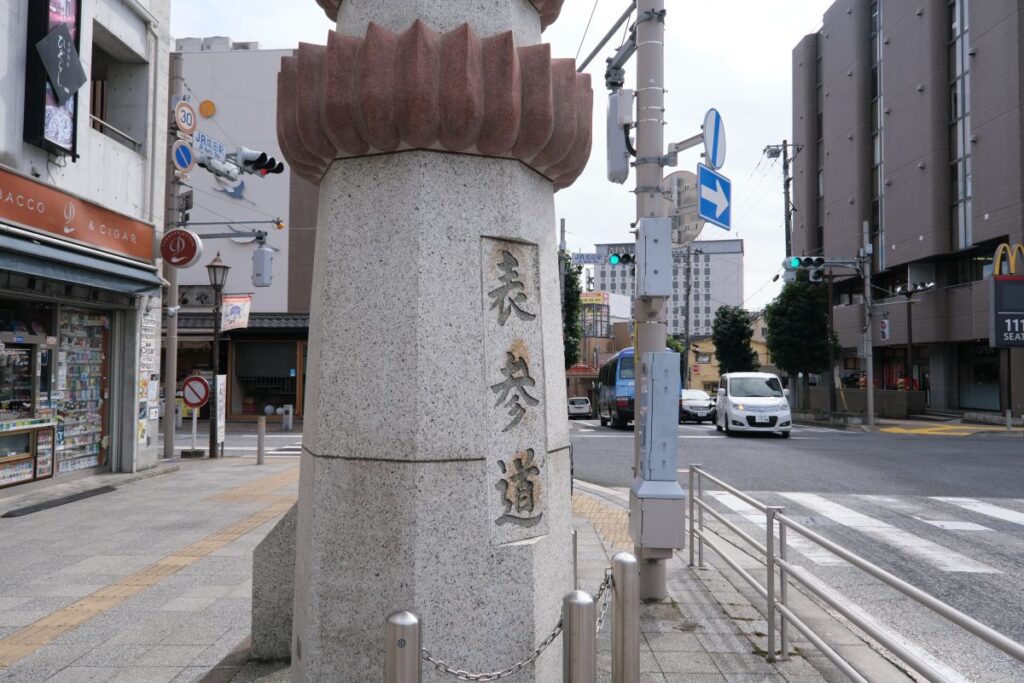
Monument written Omotesando. From JR Narita Station, turn left at this intersection. By the way, this neighborhood is called Hanazaki-cho. It is a popular restaurant for foreign travelers and has a rich international color.
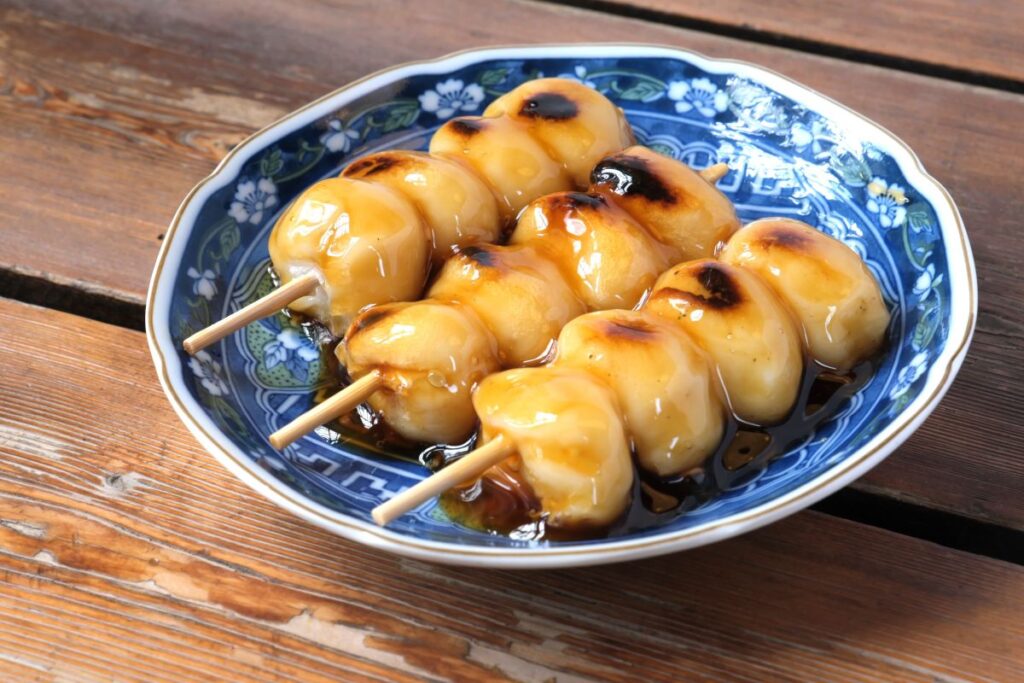
If it's a bun, go to the long-established sweet shop "Goto Dangoya". The company was founded in1845, and the specialty is dumpling, which keeps the recipe and taste from the time of its founding. Each morning, dumplings made from tsuk rice cakes are carefully baked one by one after the order is received. The outside is crisp and the inside is fluffy. Mitarashi's paste is irresistible!
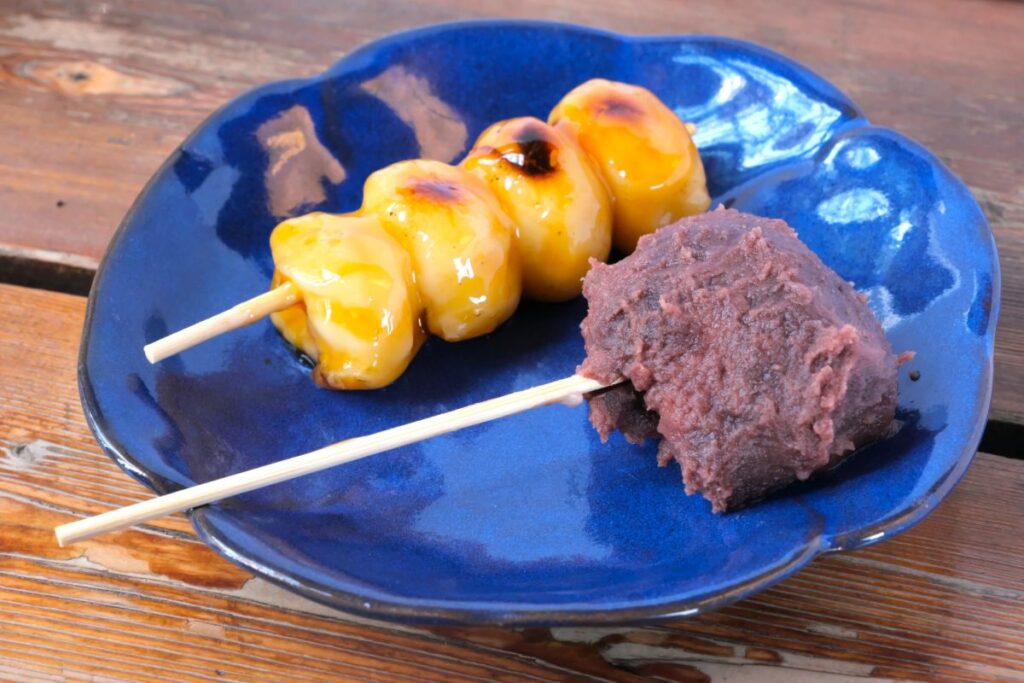
The bean-jam dumplings, filled with plenty of bean paste, are also popular. Both are available for purchase individually. Please enjoy the traditional taste.
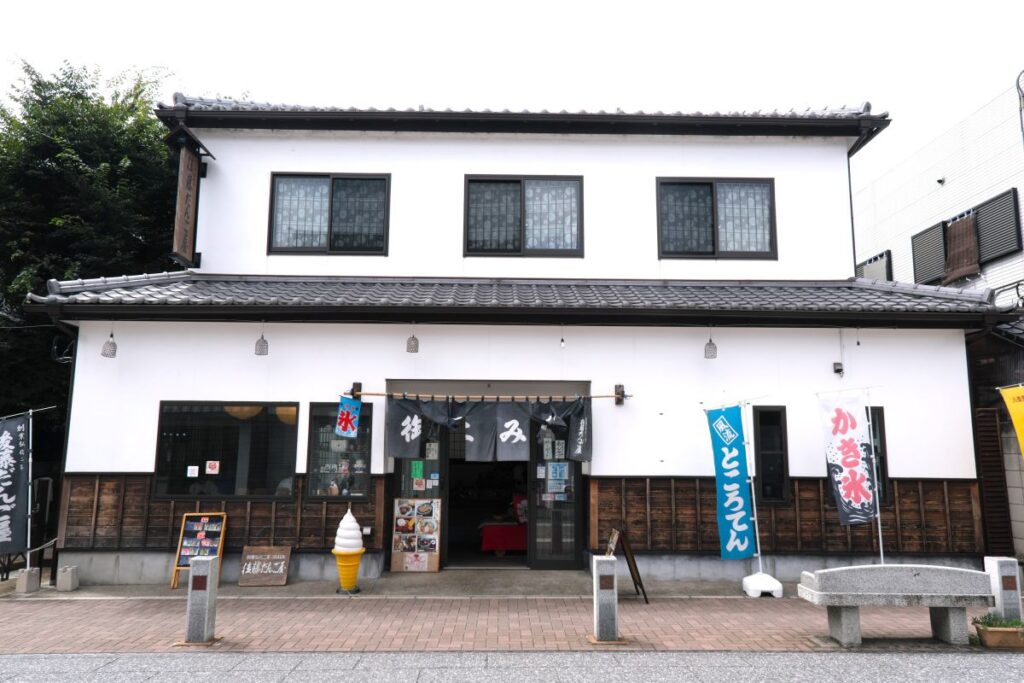
■ Goto Dangoya
Address: 499 Kamima-cho, Narita, Chiba
TEL:0476-22-2560
Opening hours: 10-17
Closed: Unregular holidays
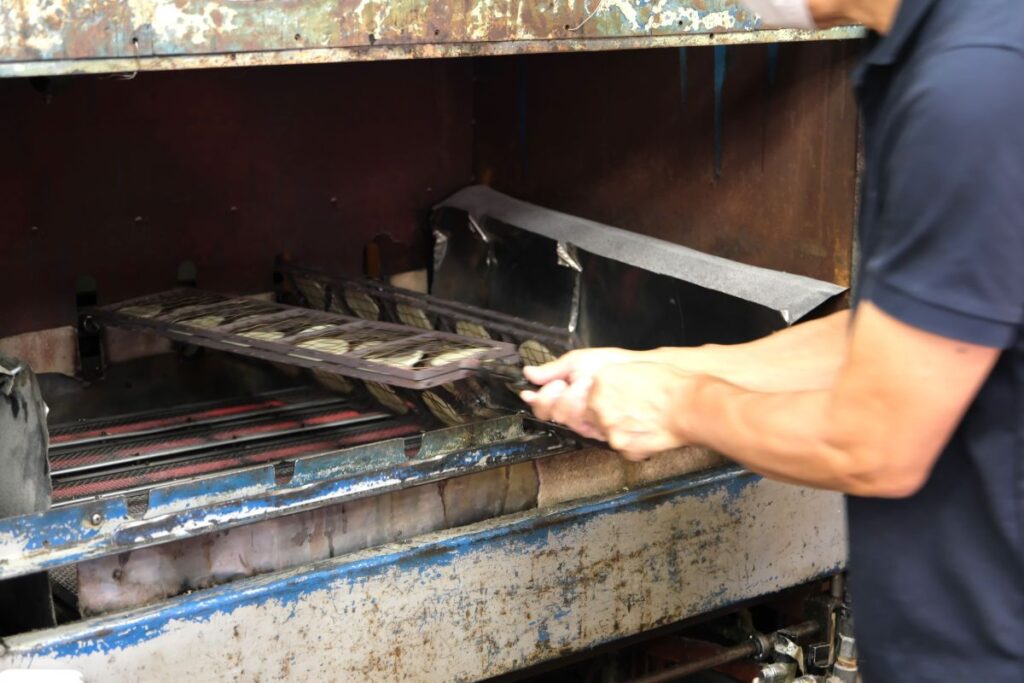
"Hayashida no Osenbei" is a popular choice for hand-baked rice crackers. In addition to bagged rice crackers, it sells "kushiki-sen", which is perfect for eating and walking. In the store, you can see how rice crackers are baked with an aged machine.
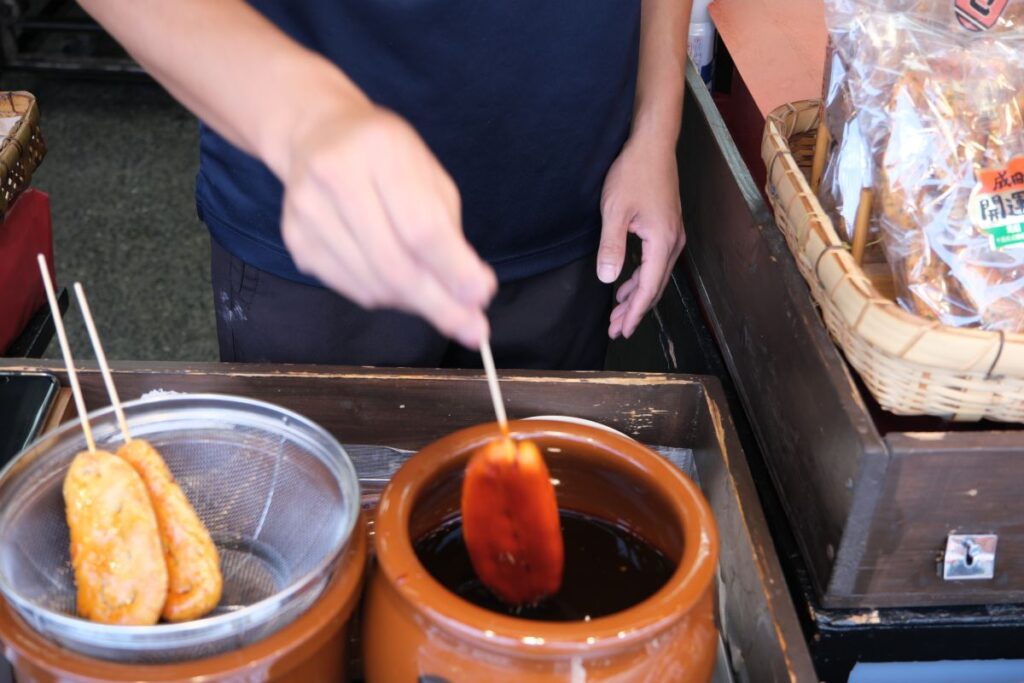
Skewer is made by stabbing a freshly baked rice cracker on a skewer and quickly passing it into a proud sauce.
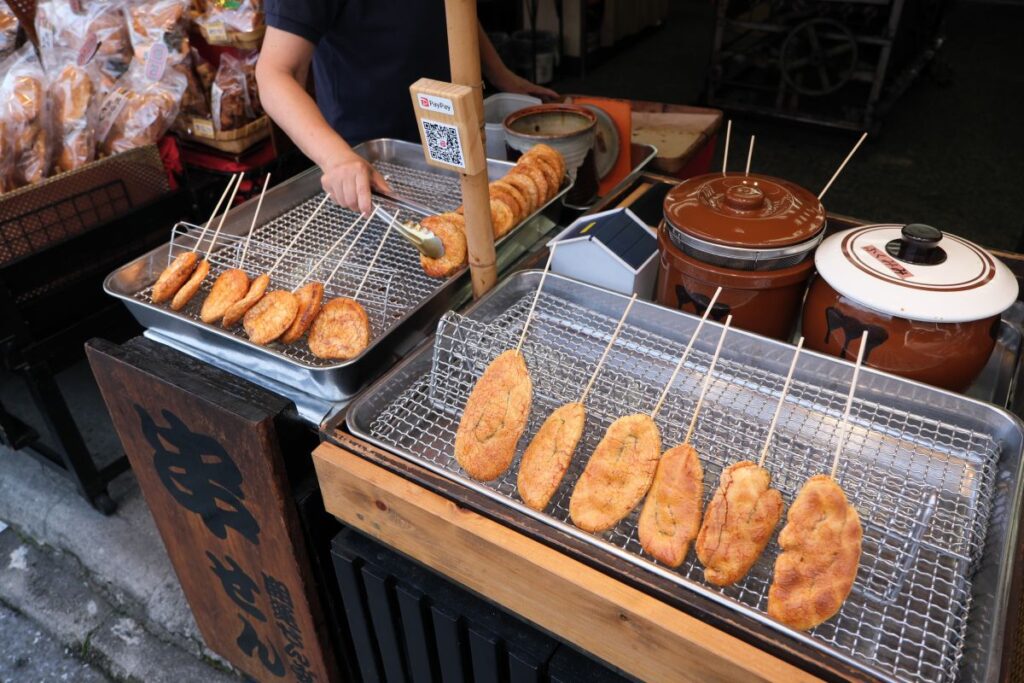
The ones on the right are oval shaped and have a mitarashi flavor with green seaweed, and the ones on the left are round and have a soy sauce flavor. They have cracks so they are soaked in soy sauce. They are moist and fragrant, and are delicious when freshly baked.
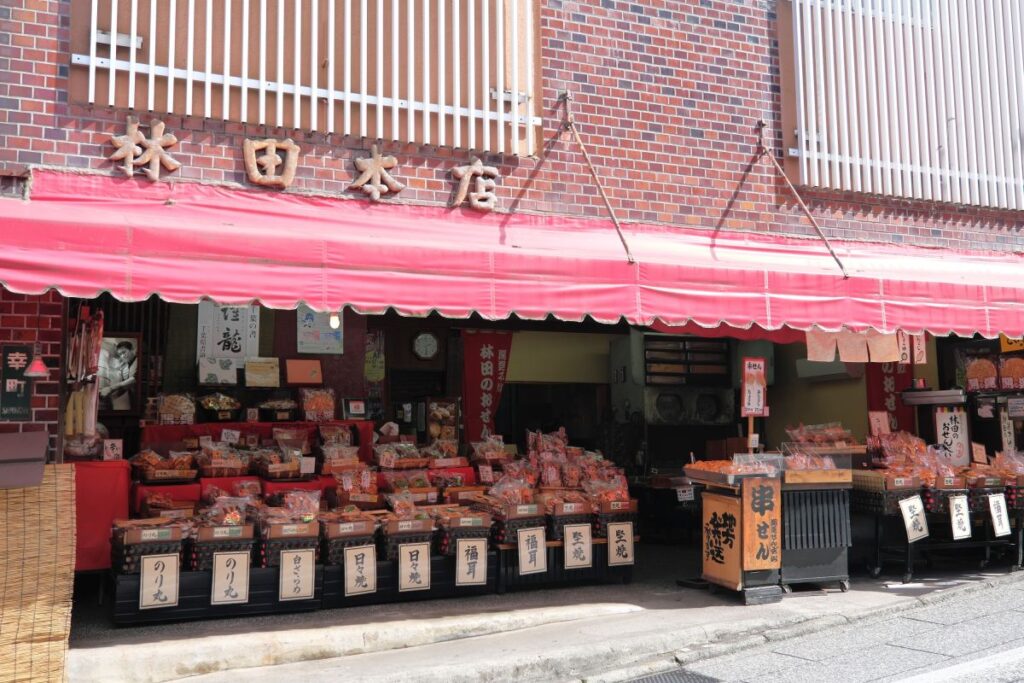
■ Hayashida's rice crackers
Address: 490, Saiwai-cho, Narita-shi, Chiba
TEL:0476-22-0138
Opening hours: 9-17
Holidays: Mondays (for holidays, the next day, no holidays in January, May and September)
What would you like to pray for? Visit Naritasan Shinshoji Temple
As you walk along the approach to the temple, enjoying some snacks along the way, you will arrive at Naritasan Shinkoji Temple, which is also famous for its Setsubun festival.
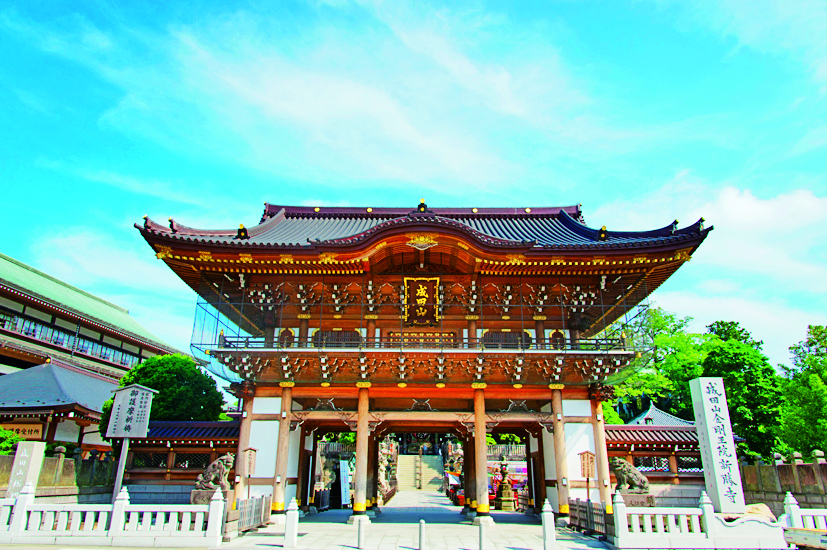
It is this "sōmon" that welcomes you first. It is a gate that becomes the entrance of the total circle that separates the inside and outside of the temple, and is about 15m high. The perimeter is decorated with 16 lion heads. The elaborate sculpture is stunning, isn't it? Let's bow here and then enter the precinct.
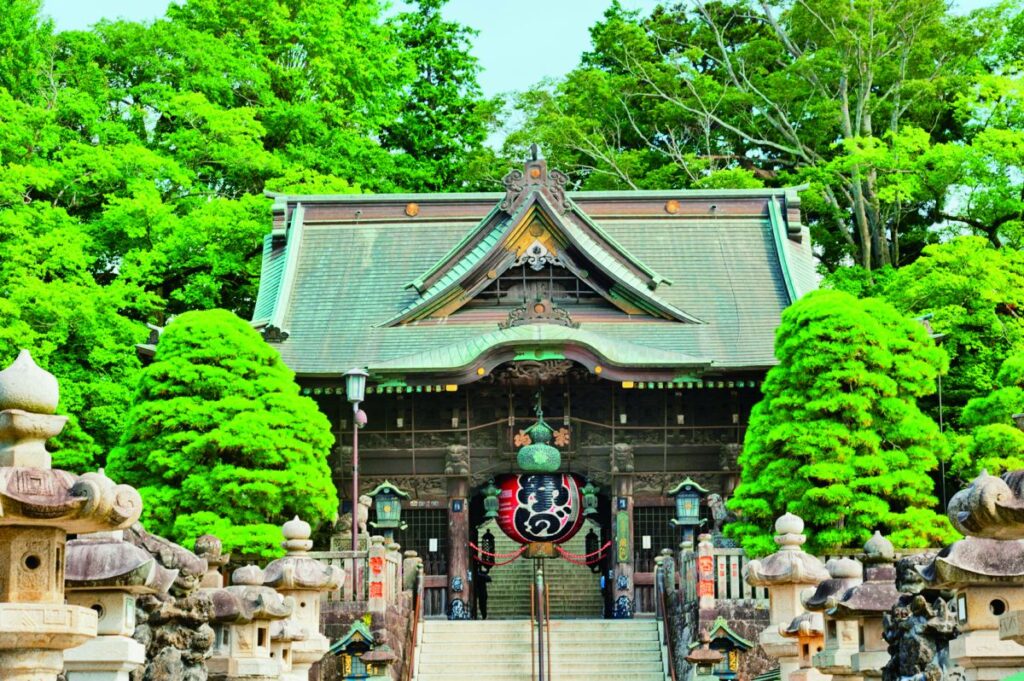
At the end of the main gate, up the stairs, you will come to the Niomon Gate. Cleanse your hands at the Chozuya (purification fountain) on the right side of the stairs before going up the stairs. The Mishaku Kongo and Naraen Kongo are enshrined here. Behind the gate are the Komokuten, who awakens the Buddhist heart, and the Tamonten, who bestows good fortune.
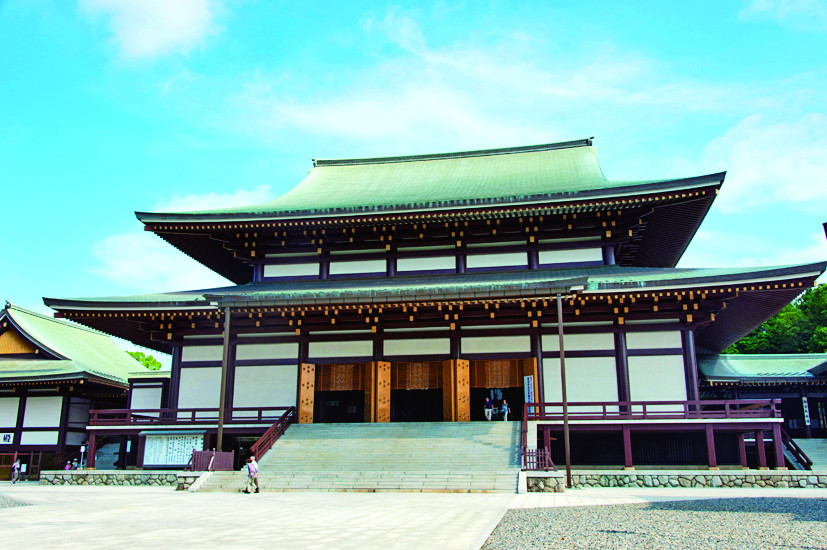
Standing in front of the Niomon Gate is the "Great Main Hall," which was built in 1968. It is the central training hall where the most important goma prayer ceremony is held at Naritasan Shinshoji Temple, and houses the principal image of Acala, as well as the Four Great Myo-o and the Heisei Great Mandala. You can also go inside the hall.
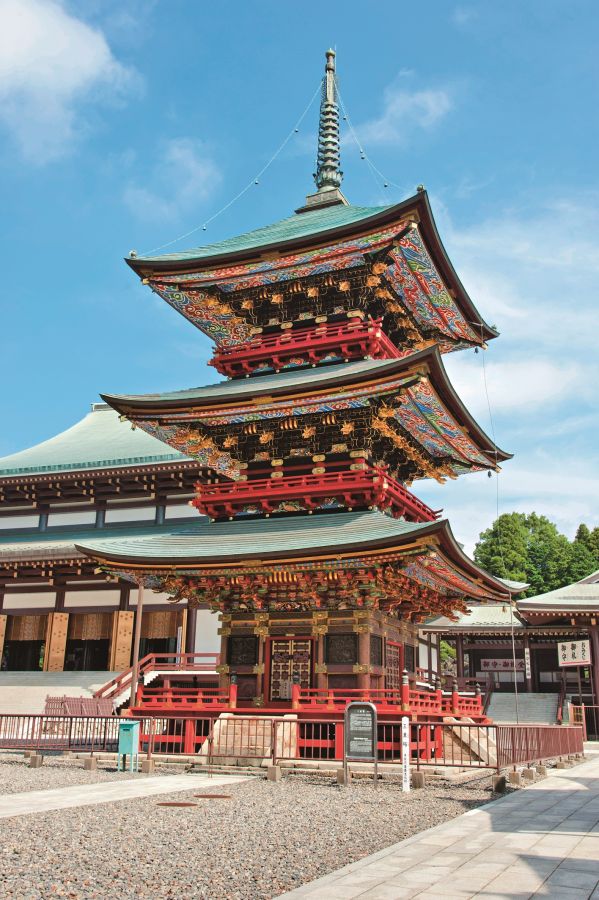
On the right hand side of the main hall is the "Sanju no Tou". It has a height of about 27m, and the Gochi Nyorai is served mainly by Dainichi Nyorai in the pagoda. It also features a polar chromatic plate eaves stretched over the rafter portion of each layer, and is commonly referred to as the "single-piece rafter".
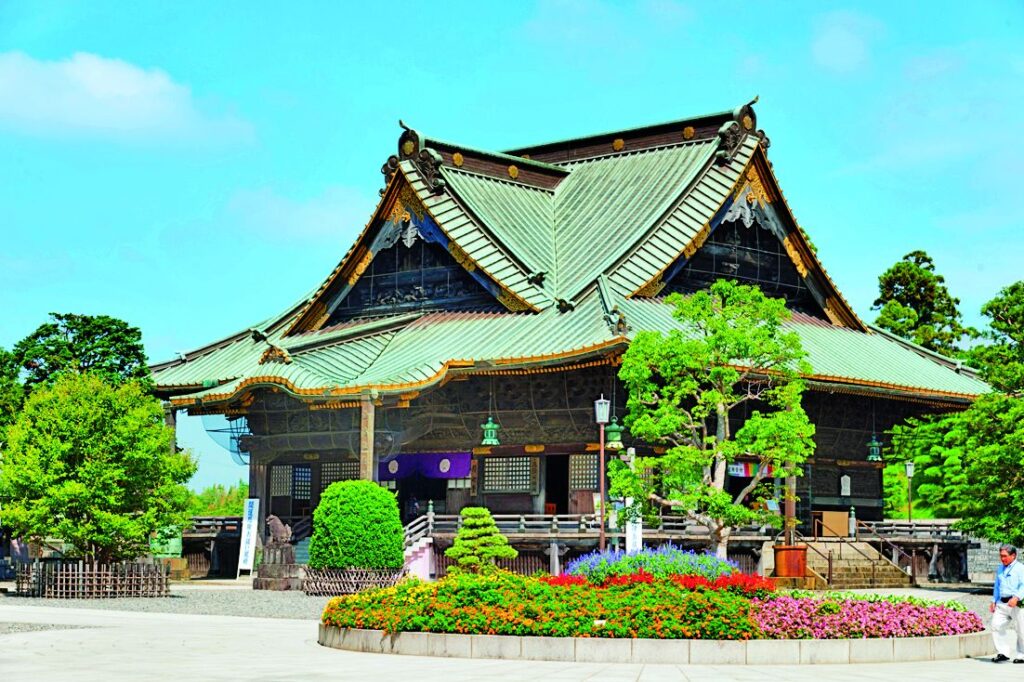
The "Shakadō" is seen as it passes through the left side of the main temple and continues to the back. It was the former main hall and was moved to its current location in 1964 on the construction of the main hall. Four Bodhisattvas, such as the Buddha Buddha and the Senju Guanyin, are served. It has become a prayer place for exorcism.
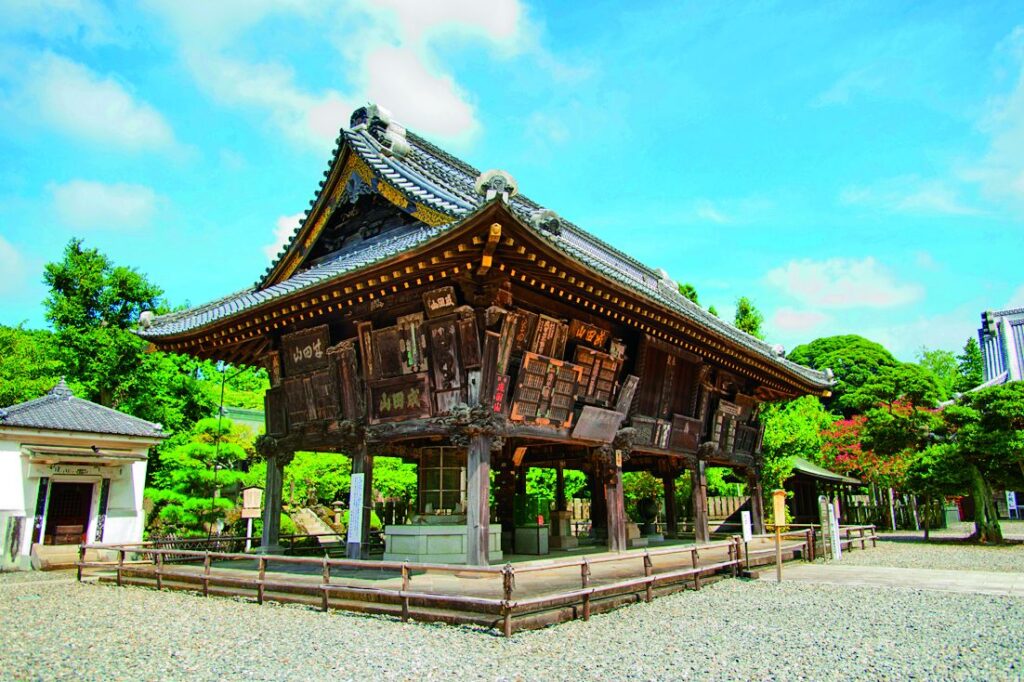
Further to the depths, the "amidō" is the "gakudō", which is the temple of the Ema, which was dedicated by the lay people; the important Ema, which was dedicated in the Edo period, also remains; and there is also a stone statue, which was donated by the seventh generation Ichikawa Danjuro.
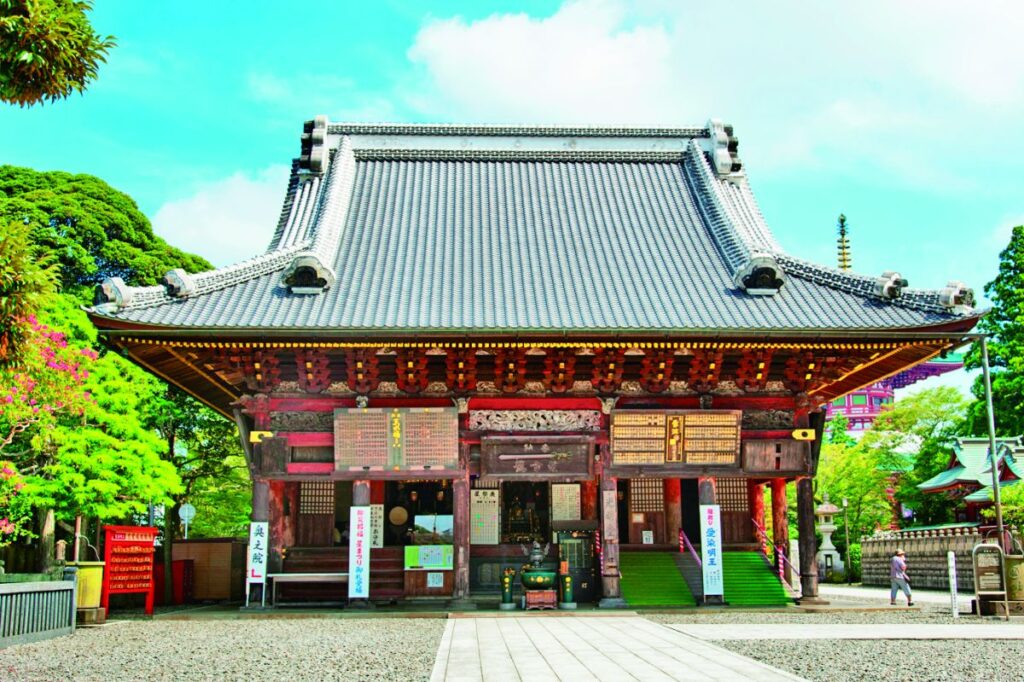
The main hall in front of Shakado is the "Komyo-do Hall". It was built in 1701 and is known as a valuable building of the middle Edo period. The main temple is Dainichi Nyorai, and in the temple, King Aizen and King Fudō are served.
Further inside, there are the ``Ioden,'' a place of prayer for recovery from illness and a long and healthy life, and the ``Heiwa Daito,'' which symbolizes the teachings of Shingon Esoteric Buddhism. On the first floor of the Heiwa Daito, there is an exhibition on the history of Naritasan, so be sure to visit.
■ Naritasan Shinshoji
Address: Narita 1, Narita, Chiba
TEL:0476-22-2111
Opening hours: Precinct free, reception is 8-16
Closed: No Closed
Fee: Precinct Freedom
Speaking of Narita... Lunch time with a specialty eel
After the visit, don't forget about Narita's specialty eels; "Surugaya", which is located on the side of Sōmon, is one of the most popular eel shops standing on the approach to the shrine; it is a long-established store derived from a travel basket established during the Edo period, and boasts a secret sauce passed down from generations.
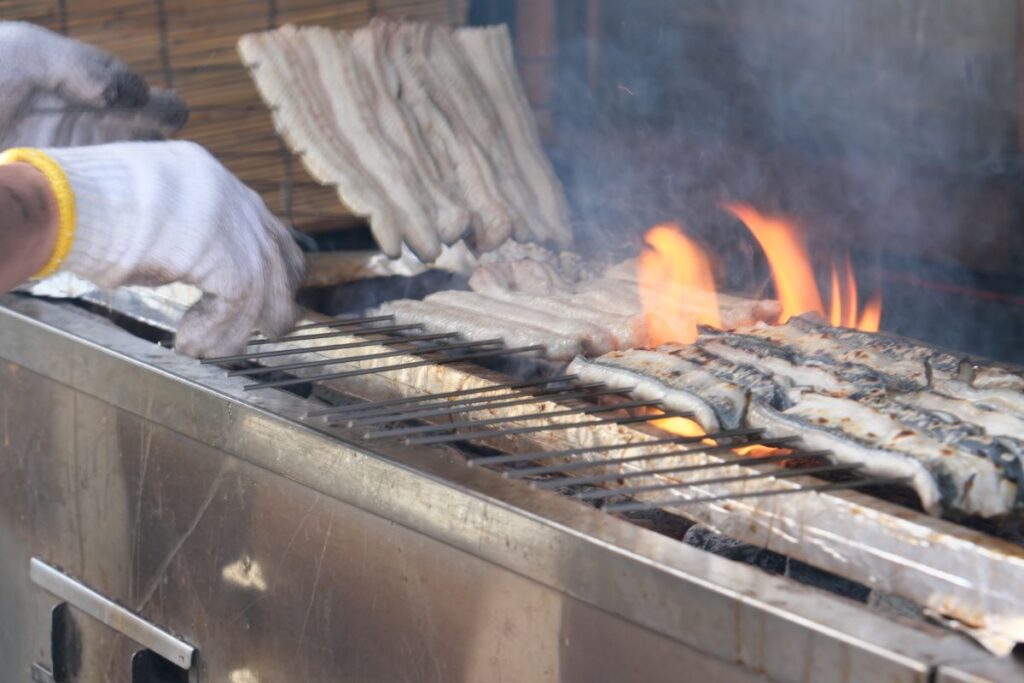
In the storefront, you can see how eels are covered and baked. The surrounding area contains the smoke and delicious smell of eels burning, and it is strangely convincing that you can eat rice with only the smoke.
Go to the shop right away. You can also wait about 30 minutes for eel dishes after you get an order.
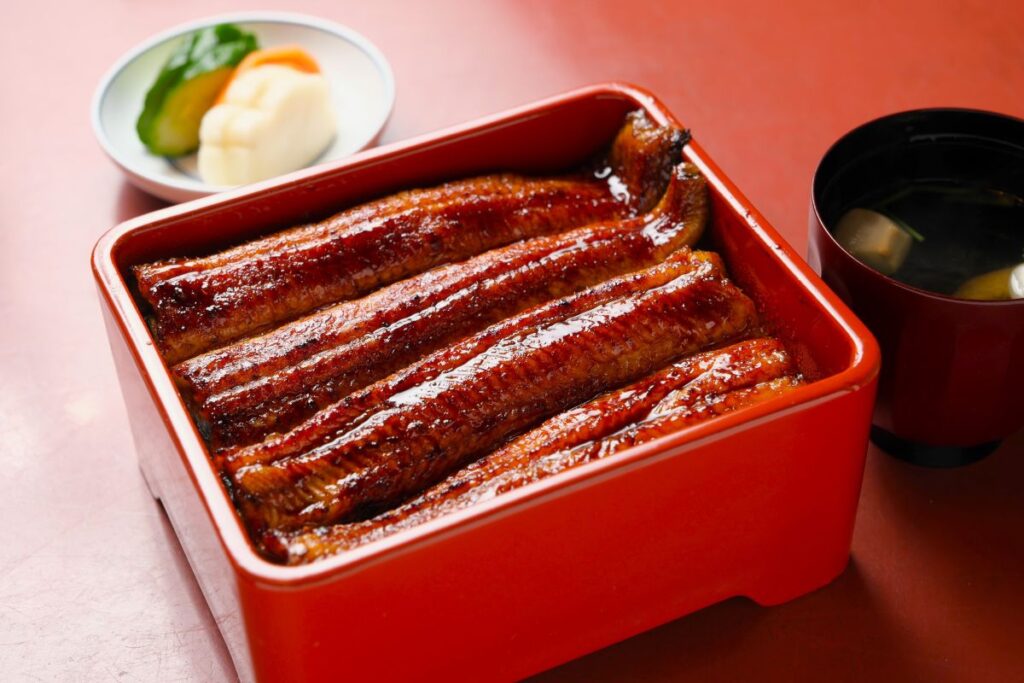
The orders of the nape weight were carried. The lusty eel that fits right in the box is unduly. It is baked with Bichō charcoal, so it is fragrant and plump inside. When you eat a bite, the eel umami spreads to your mouth. A crisp sauce that is not too sweet is also good.
Since it is a shop that cannot be booked, it is also possible to wait for a considerable time when it is crowded. When you are full, you will issue a numbered ticket at the ticketing machine and wait for it to be called in the order of numbers. It will tell you about the waiting time, so it is recommended to stop by before worship on weekends and get a numbered ticket first.
■ Surugaya
Address: 359 Nakamachi, Narita City, Chiba Prefecture
TEL:0476-22-1133
Opening hours: 11-17 o'clock (16 o'clock LO); 10-17 o'clock on Saturdays, Sundays and public holidays
Holidays: Thursdays (no January), with temporary holidays
- This article is created based on the contents of "Rurubu Information Edition" or "Rurubu & more." "Rurubu +".
- The data listed are as of March 2025. Prices, business hours, regular holidays, menus, etc. may change or may not be available due to temporary holidays. Please check in advance when using it, as the content may change.
- The holiday of stores and facilities omits the year-end holiday, Obon holiday, Golden Week, and temporary holidays in principle.
- The published fees are in principle the fee including consumption tax that we have confirmed at the time of the interview, and the entrance fee is the adult fee if there is no special mention.
- In principle, the time of publication is open (kan) to closed (kan). Please note that the last order or entry (kan) time is 30 minutes to 1 hour before the normal closing (kan) time. The last order is written as LO.
- For the spring quality and efficacy of the hot springs listed, manuscripts are prepared based on answers from each facility.

